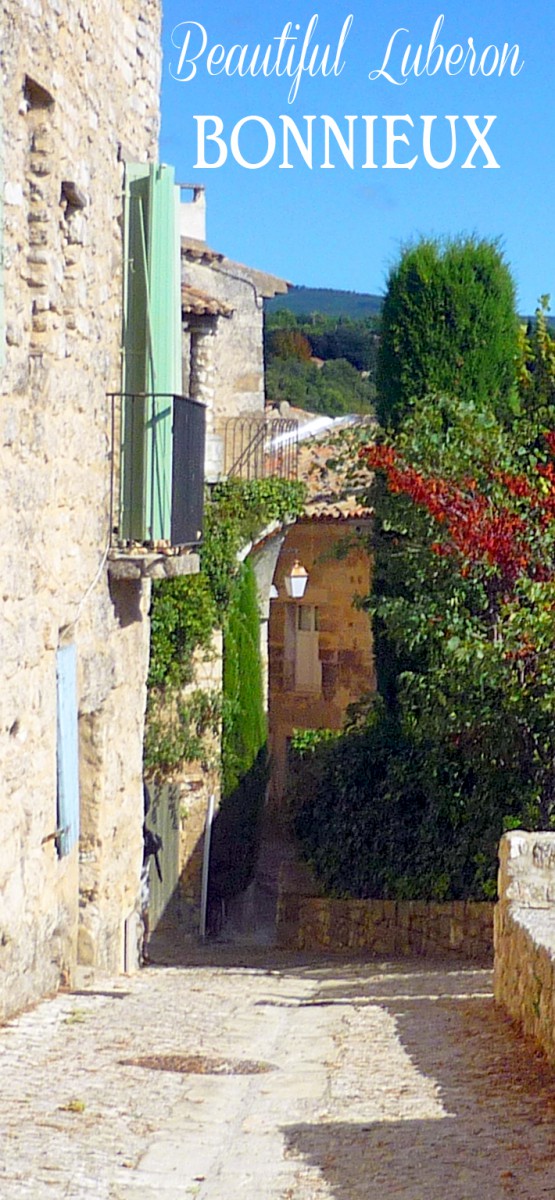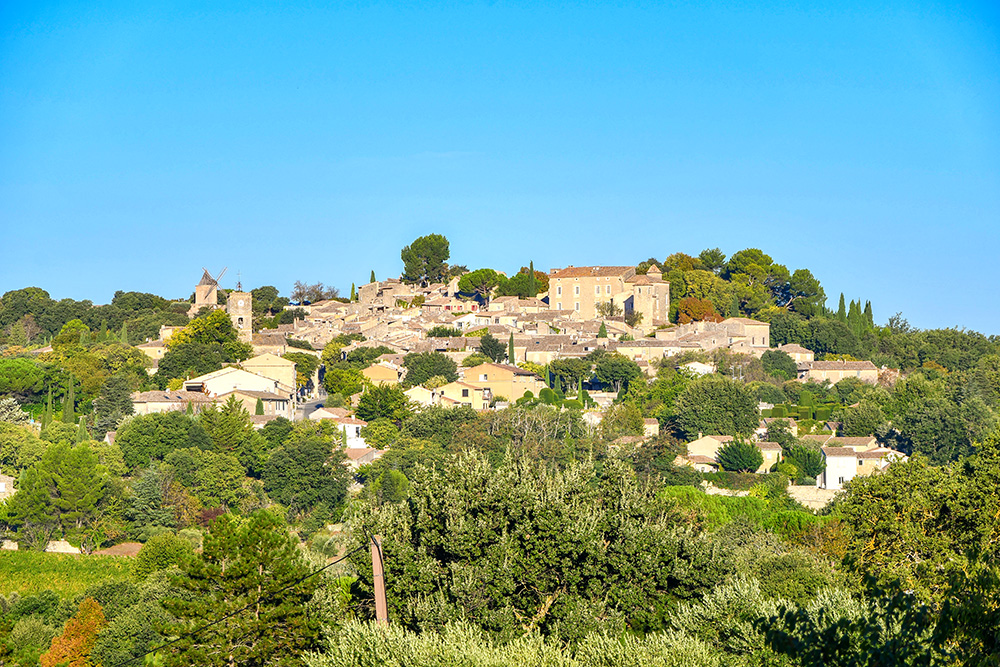Nestled in the heart of the Luberon, Goult is a hidden gem of Provence, rich in history and charm.
Having never visited before, we were astonished by its beauty and tranquillity, as we had always been drawn to more popular villages like Gordes and Roussillon.
This quaint village, originally named Agoald by the Romans, is adorned with beautifully restored façades, narrow winding streets, and shaded squares.
From the bustling market at the Place de la Libération to the panoramic views from the Place de la Madeleine, every corner of Goult tells a story.
Perfect for lovers of history and architecture, Goult offers a serene escape into the past amidst the stunning landscapes of southern France.
Discovering Goult was a delightful surprise, reminding us that sometimes the less-travelled paths lead to the most memorable adventures.
Watch this short video on the Luberon!
Plan your trip
- 🛏 Find the best accommodations in the Luberon on Booking.com
- 🚙 Rent a car in Aix-en-Provence or Marseille-Provence Airport
- 🙋♀️ Get the PASS CÔTE D'AZUR and take your pick from more than 100 amazing experiences!
- 🤩 Visit the beautiful Provençal region of Luberon
- 🚐 Join a 6-hour tour of Lourmarin, Bonnieux, Roussillon, and Gordes by air-conditioned minibus
- 🚘 Discover Provence in a 2CV. Stroll along exceptional roads and enjoy a piece of Luberon all to yourself!
- 🥗 Experience a black truffle hunting tour in a Luberon plantation
- 📚 Read the DK Eyewitness Provence and the Côte d’Azur Travel Guide
- 🗺️ Download the map of the village.
- 🚗 There are several parking spaces in the village. In case of heavy tourist traffic on Place de la Libération, park a bit further on Place Saint-Pierre.
Goult: A Bit of History
Let’s step back in time as we recall the storied past of Goult.
The stronhold of the D'Agoult
Curiously, Goult is a name of Germanic origin: Agoald.
The village castle is mentioned at the beginning of the 11th century under the name Castrum Agoldi.
Then, it became Agoùt in Provençal, and finally Goult.
This village also gave its name to a powerful dynasty of Provence in the 11th century: the d’Agoult family.
This family ruled the land of Apt and Sault throughout the Middle Ages and in Goult until the 16th century.
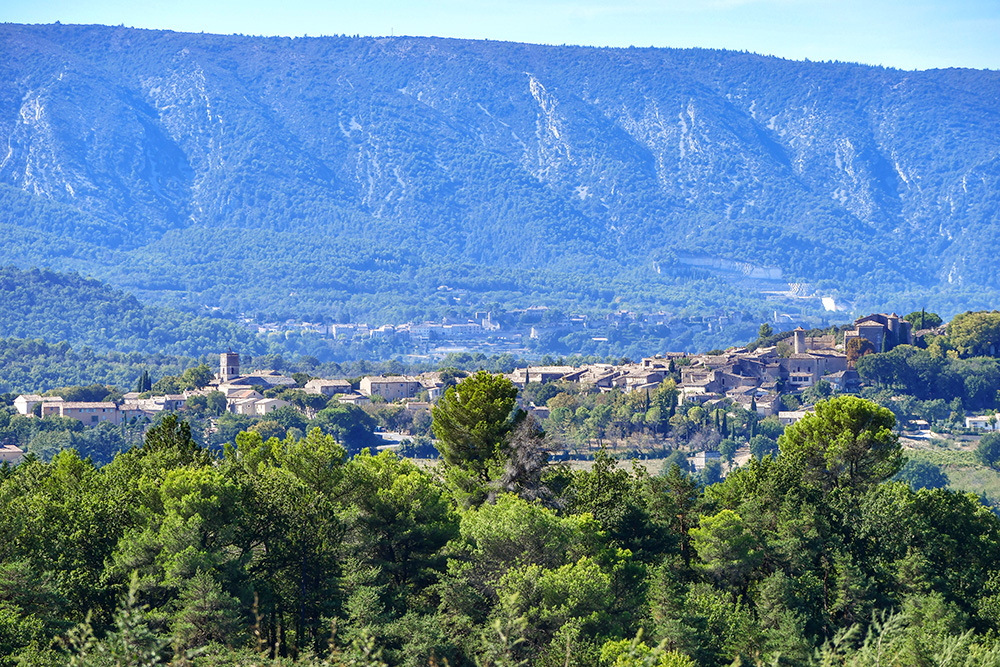
Goult and Ménerbes © French Moments
The Donis era
After them, the Donis family ruled over Goult.
This was a family originating from Florence in Italy.
In 1563, the Donis had to defend their seigneury against an incursion of Huguenots from the vicinity of Ménerbes.
It was around 1538 that the habit of eliding the A of Agoult took hold, and the village henceforth became known as Goult.
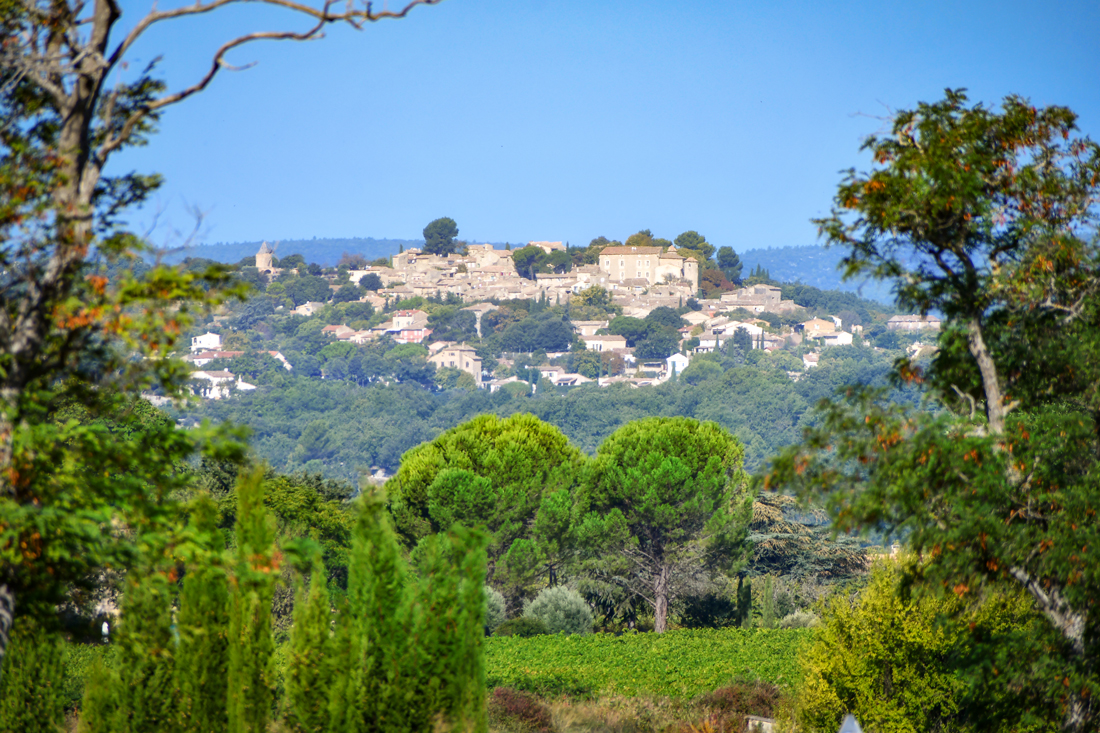
Goult © French Moments
The Discovery Guide of Goult
Here's some tourist information to help you explore the Provencal village.
🎦 Check out my guided walk on YouTube to explore Goult with me:
Understanding the Village
If you love old stones, you will find your happiness wandering through the village’s narrow streets.
You will admire beautifully restored façades, vaulted passages, arcades, and shaded little squares.
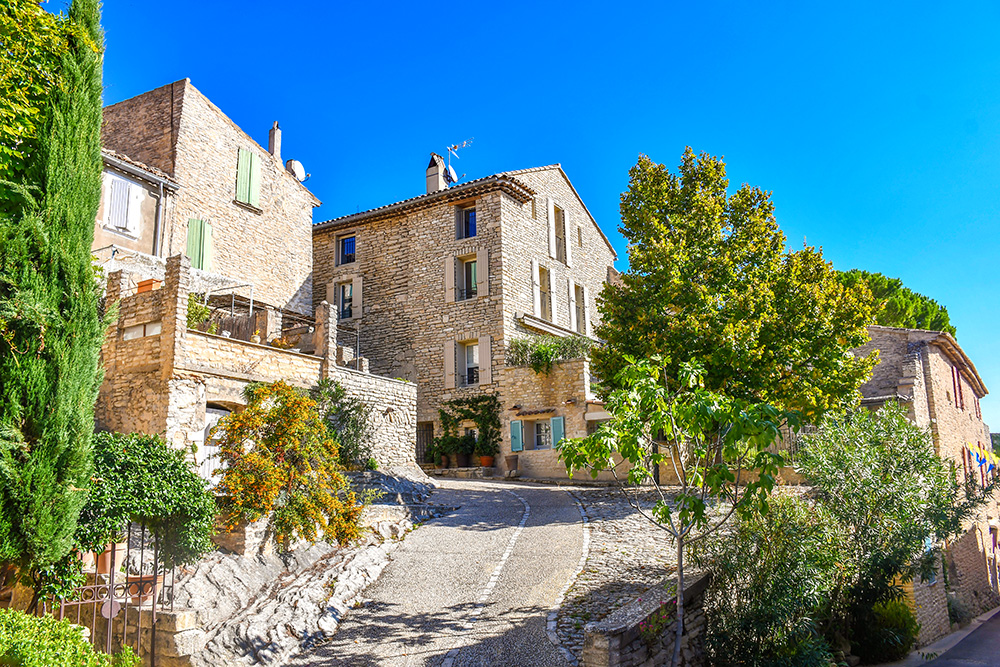
Goult © French Moments
It is said that Goult is a hidden village in the Luberon.
Indeed, it is a village off the historic route from Cavaillon to Apt, which was once part of the Via Domitia of the Romans, linking Italy to Spain through southern France.
A Guide of the Village of Goult
Let's start the tour from the Place de la Libération to the east of the village.
Place de la Libération
The Place de la Libération is the heart of the village, lined with cafés, restaurants, and the Romanesque Saint-Sébastien church.
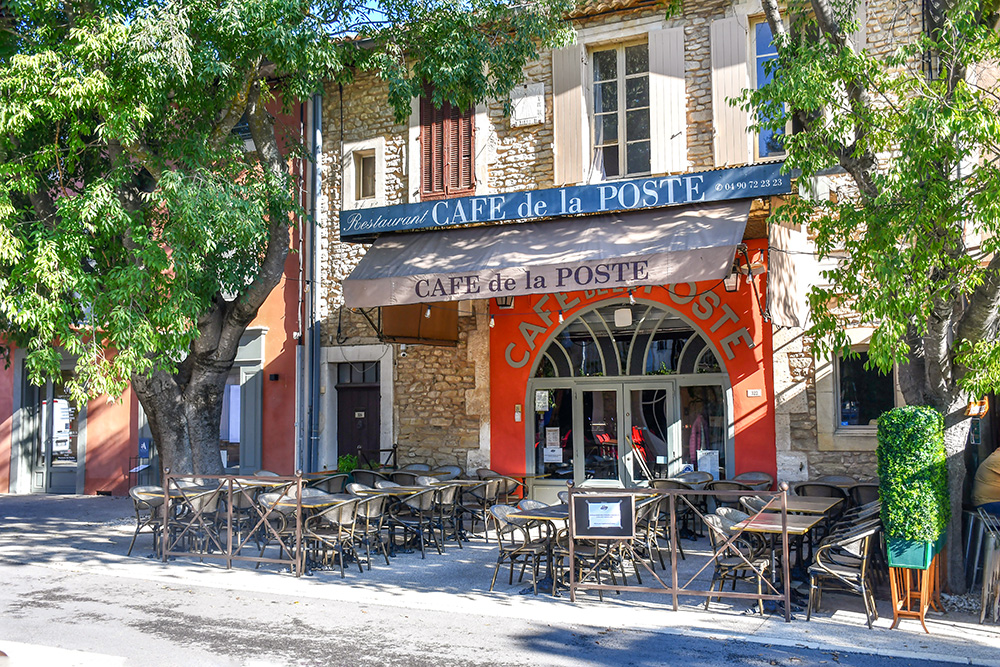
Café on Place de la Libération © French Moments
This is one of the spots where you’ll find a parking place for your car.
On Thursday mornings, the square is occupied by the market, where you can find local products from the Luberon producers.
Let's turn left to start our tour of Goult.
Rue de la République
Here we are on the Rue de la République, which leads up to the old village.
Along this street, you’ll find beautiful mansions and old shops.
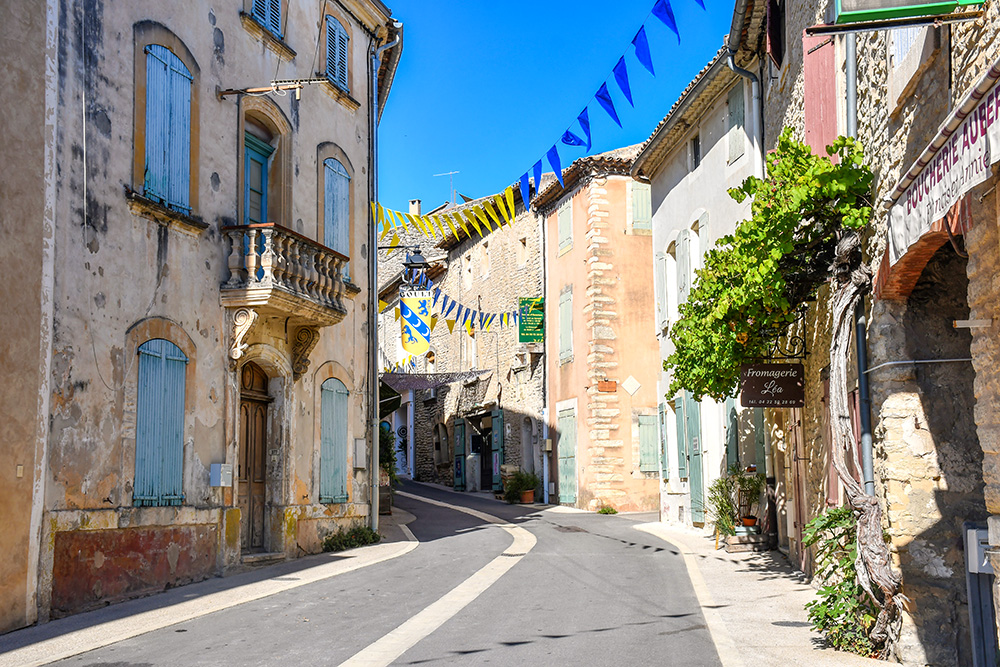
Rue de la République © French Moments
Place Alphonse Bernard
We arrive at the Place Alphonse Bernard with its roundabout planted with an olive tree.
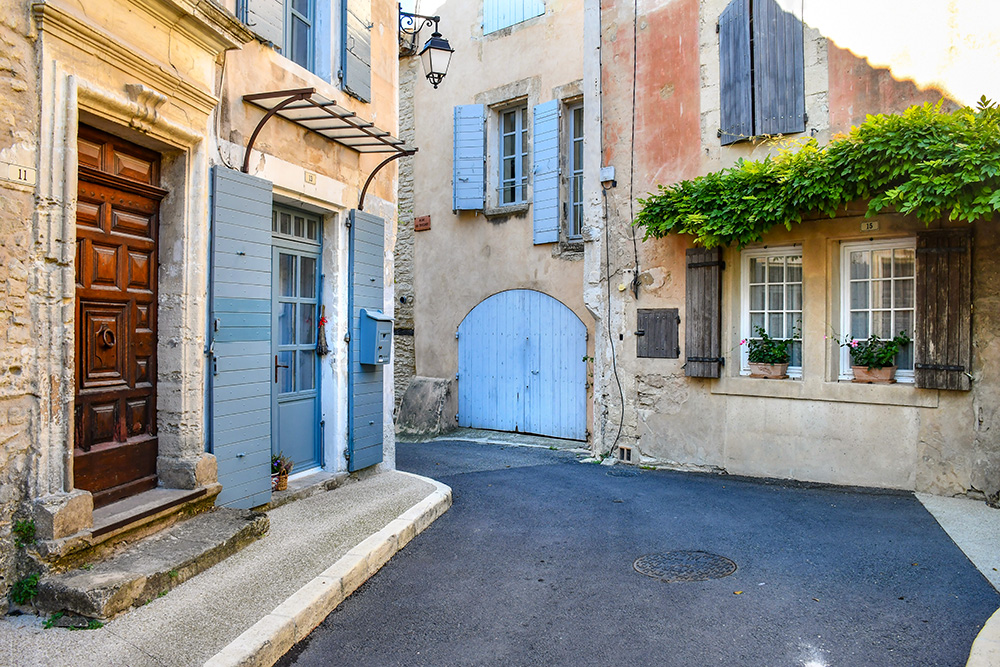
Place Alphonse Bernard © French Moments
Let's take the Rue de l’Horloge to the right.
On the left, we walk along the rock on which the castle was built.
We will see the carved rock again later in the walk.
Place de l'Ancienne Mairie
We arrive at the Place de l’Ancienne Mairie, and let’s turn around to admire the beautiful slender tower of the ramparts.
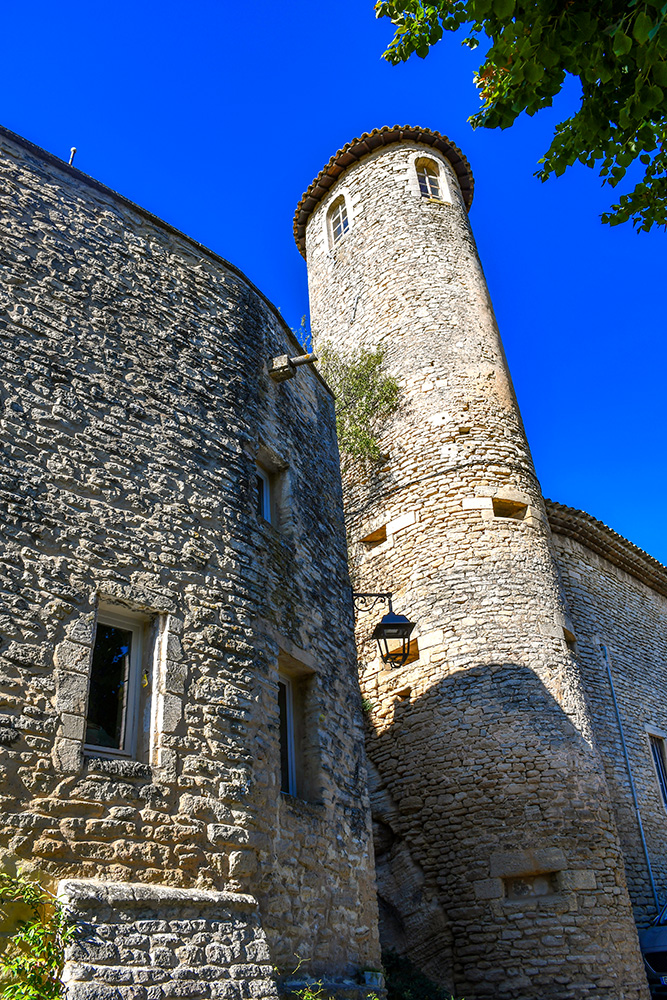
Goult Castle © French Moments
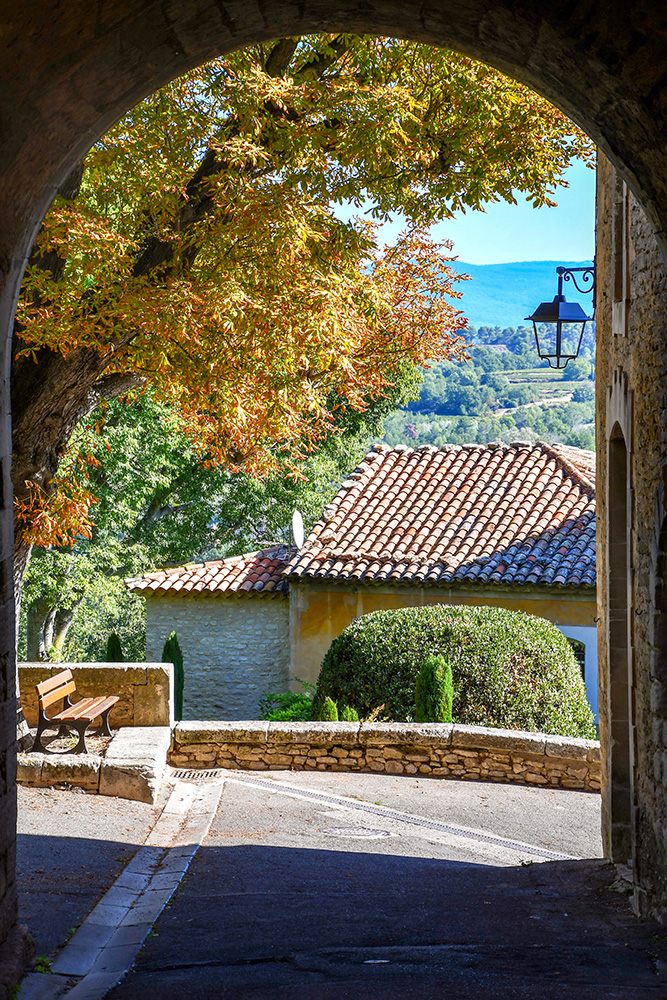
In Goult © French Moments
The large chestnut tree you see straight ahead is a “Tree of Liberty” planted in 1789, at the beginning of the French Revolution.
And here you'll get a view of the castle.
The Castle
Let's pass under the archway to take the Rue du Château.
The castle belonged to the d’Agoult family.
It was built in the 13th century and remodelled in the 17th and 19th centuries.
Its austere façade was pierced with large windows in the 17th and 18th centuries.
The castle is currently private.
Now, let’s continue the climb along the Rue du Four.
We pass through a trench-like street carved into the rock.
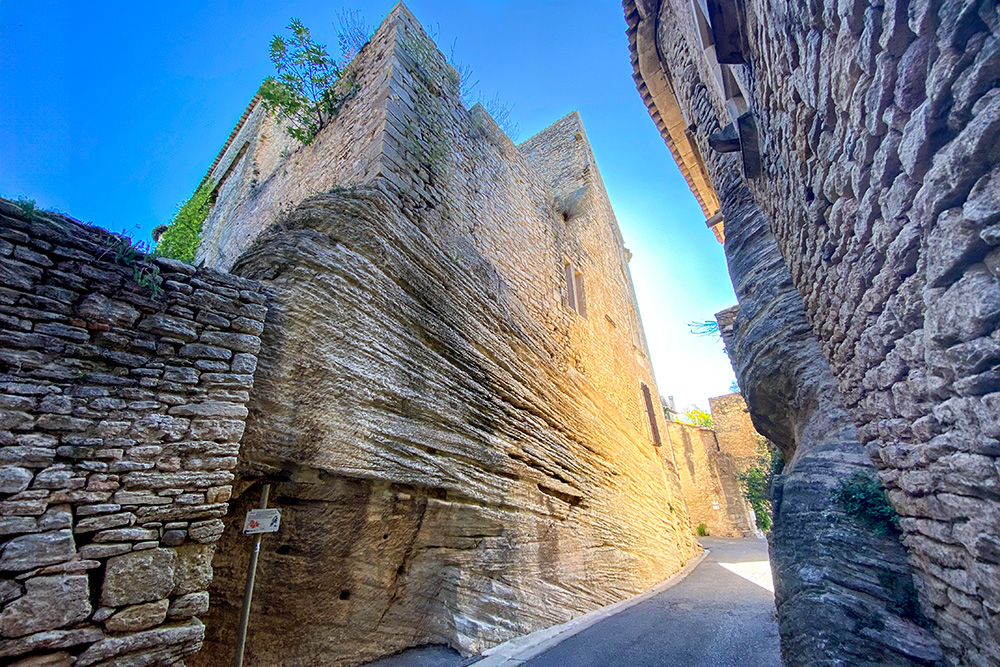
Goult Castle © French Moments
We emerge onto a beautiful little shaded square: the Place de la Vallée.
Place de la Madeleine
Let's keep climbing to the view point of the Place de la Madeleine.
There is a panoramic view to the north with, in the distance, the plain and the village of Gordes, the Monts de Vaucluse, and Mont Ventoux.
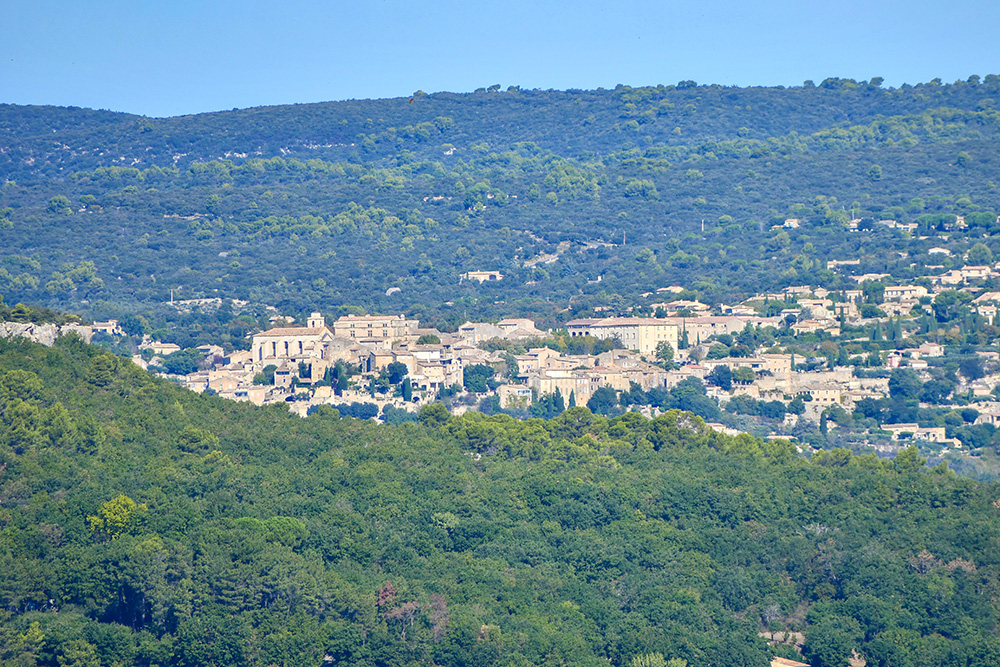
A view of Gordes from the viewpoint © French Moments
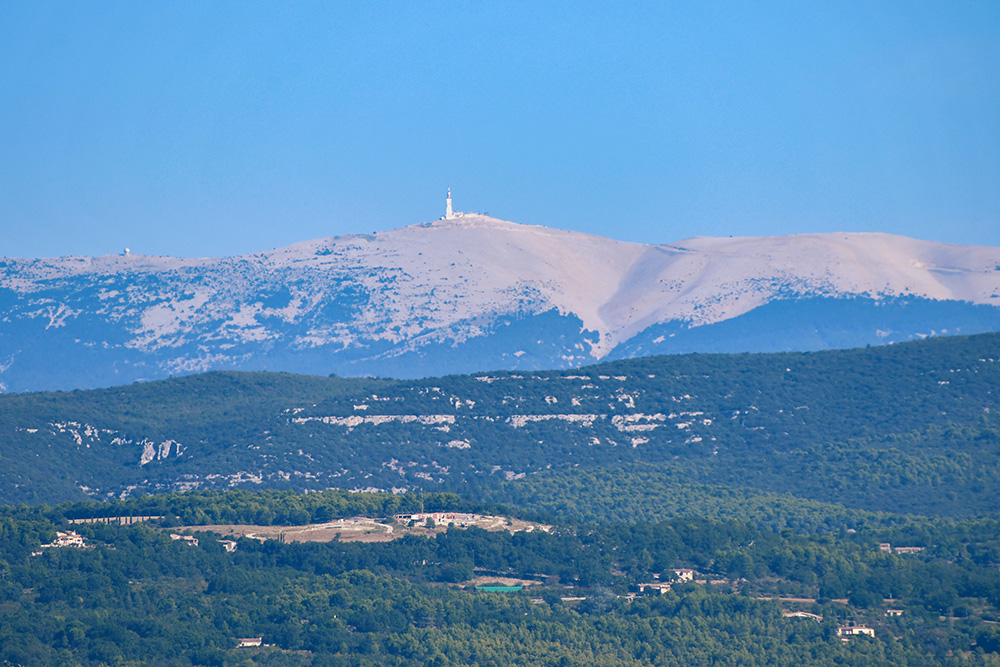
Mont Ventoux from the viewpoint © French Moments
This spot once housed the chapel Sainte-Madeleine de la Paix.
Place du Vieux Village
Now, let’s head to another picturesque spot in Goult, the Place du Vieux Village.
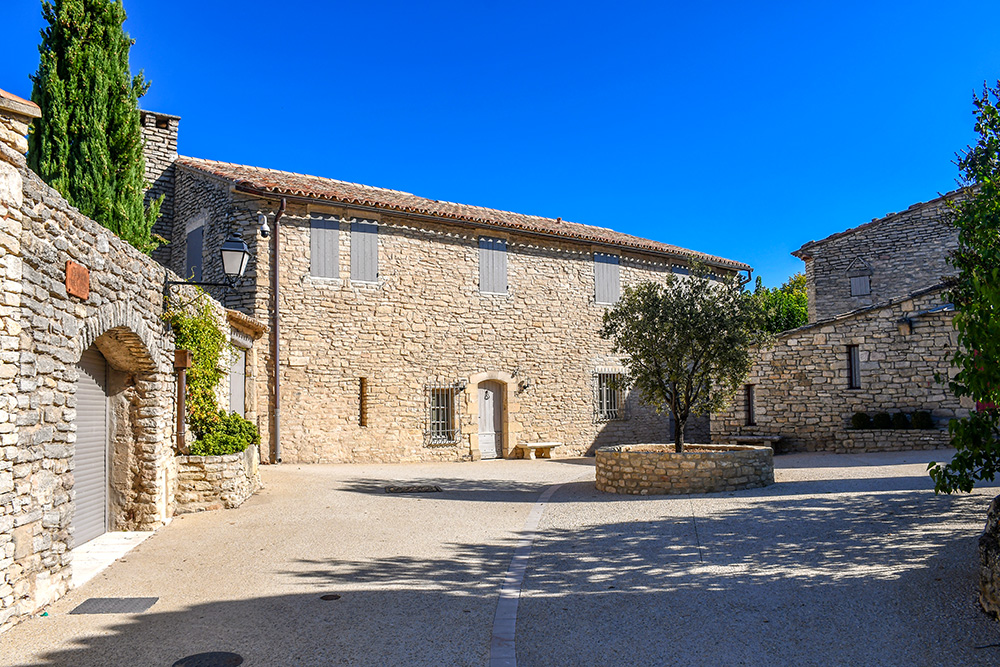
Place du Vieux Village © French Moments
It is hard to believe that in the 1950s, this place was a field of ruins.
Since then, the houses have been superbly restored.
This was where the primitive castle of Goult, the Babilony Castle, once stood.
We will leave the village through the Porte du Pont-Levis, a gate in the old rampart that, with its drawbridge, protected the entrance to Goult from the west.
Moulin de Jérusalem
Here we are at the Aire des Astronomes.
In front of us stands the beautiful windmill of Goult.
Let’s go and admire it up close.
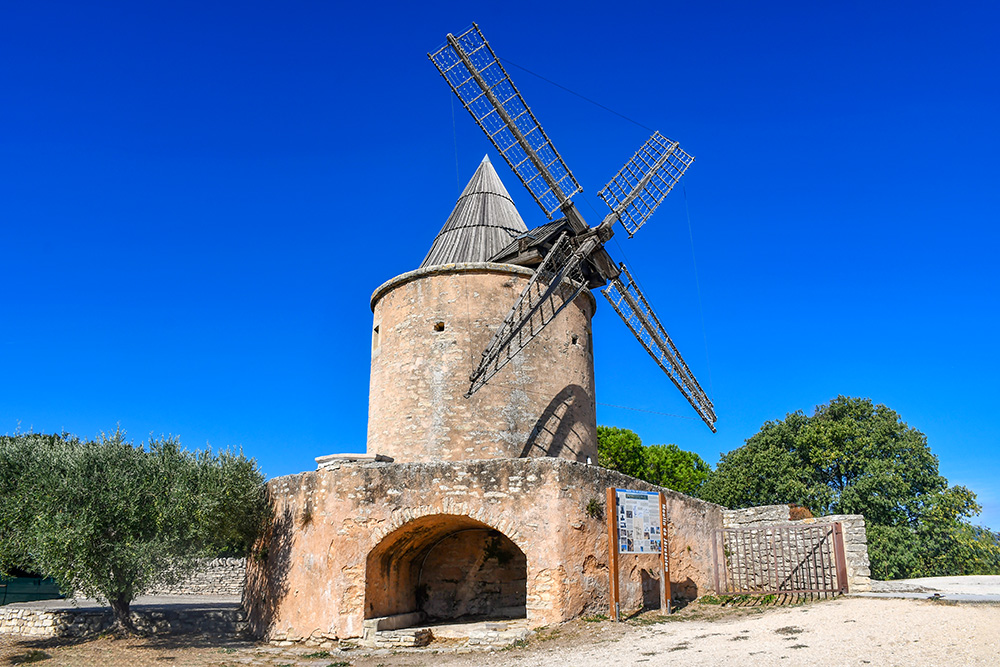
Moulin de Jérusalem © French Moments
In 1750, this mill, called “Tré Casteau,” already appeared on Cassini maps.
The grain mill operated until 1919.
In 1947, the National Geographic Institute acquired it to make it its teaching centre for astronomy before selling it to the commune in 1996.
The mill is flanked by an olive tree, and yes, it bears many olives in season!
The esplanade offers a magnificent view of the village of Goult and the Luberon up to Bonnieux, the village opposite.

View of the village © French Moments
To fully enjoy it, you must come in the late afternoon when the sun illuminates the roofs of the old village from the west.
Let’s retrace our steps and descend into the village via the Rue du Jeu de Paume.
Porte de l'Orme
On the left, here is the beautiful fortified gate of the Porte de l’Orme.
Inspired by Saracen design, this 14th-century gate marked the main entrance to the village.
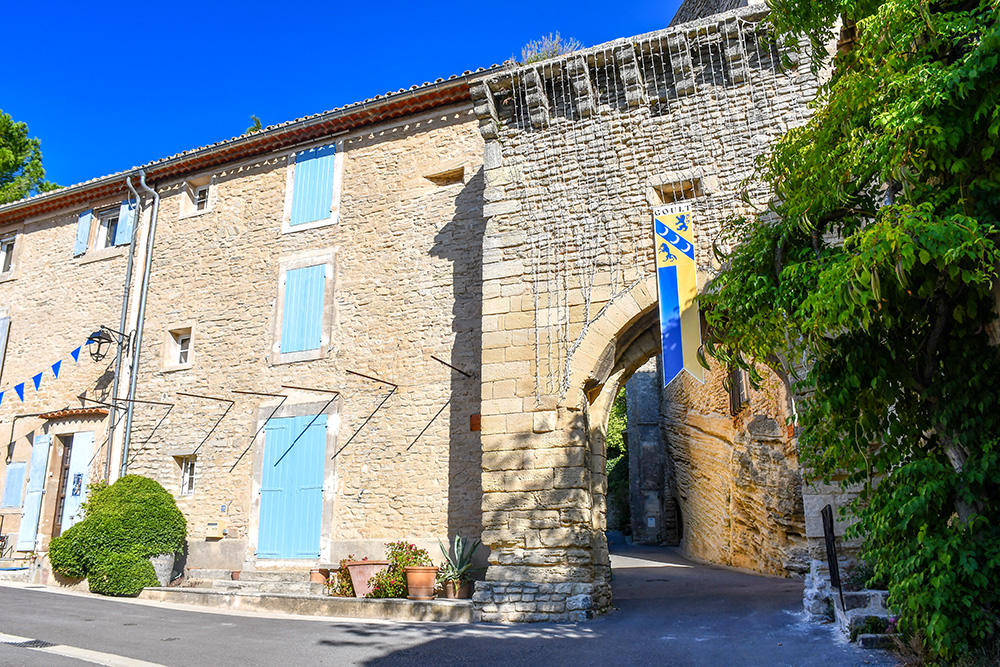
Porte de l'Orme © French Moments
From there, we take the same path to descend the village back to the Place de la Libération.
The Church of Saint-Sébastien
Located in the Place de la Libération, the église Saint Sébastien is listed as a historical monument.
The Romanesque-style construction began under Guillaume d’Agoult in the 11th century.
It adjoins the presbytery and the former priory, which once depended on the Abbey of Saint Victor in Marseille.
In 1785, the church was named after Saint Sebastian, the protector against the plague and the patron saint of Goult.
Upon entering, one is struck by its Romanesque simplicity and harmonious proportions.
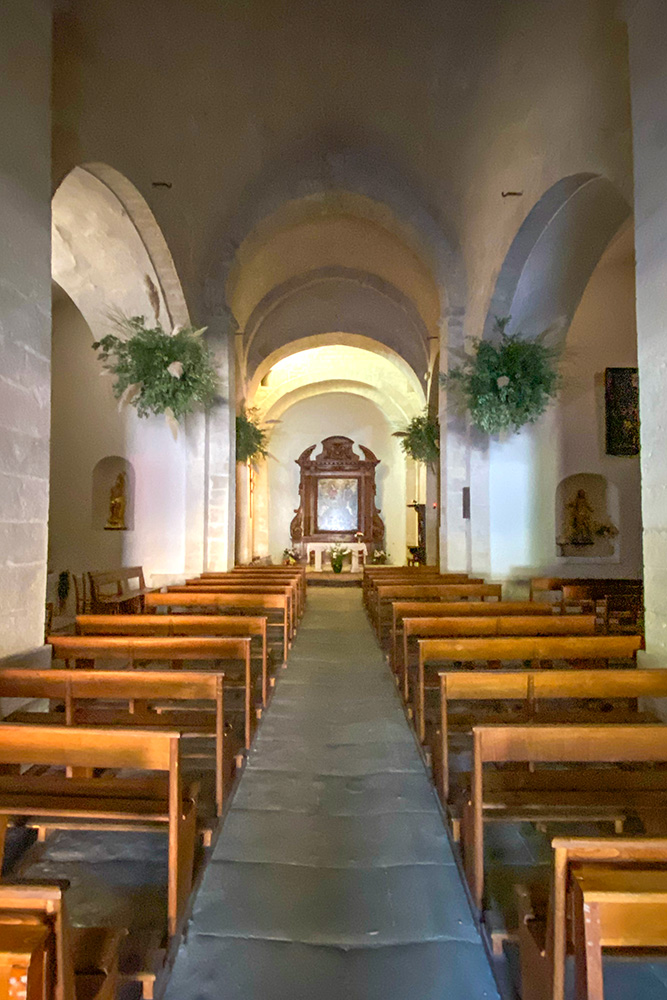
The nave © French Moments
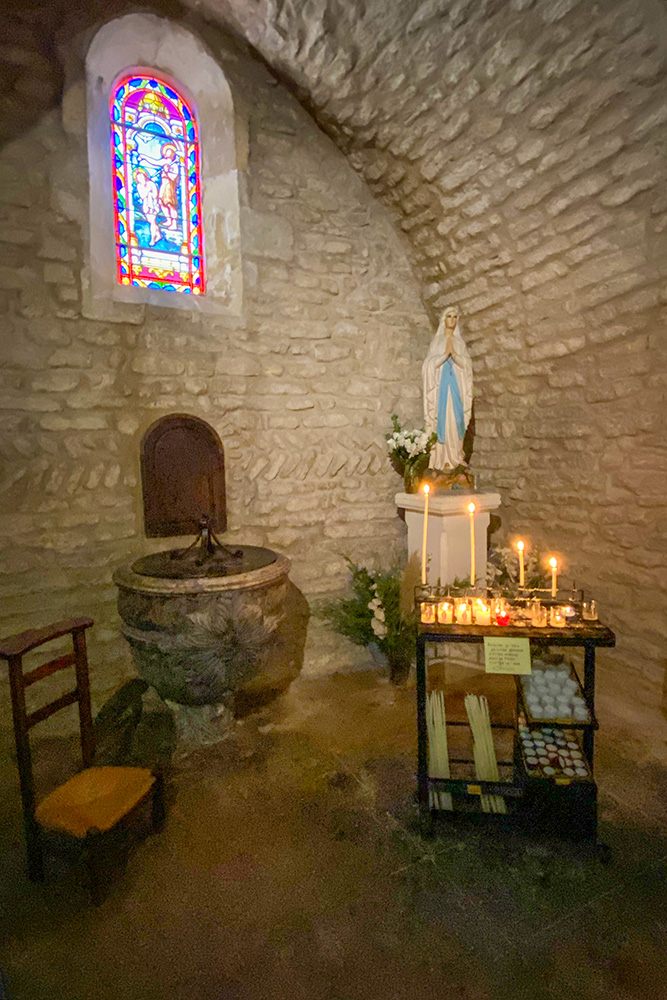
A side chapel © French Moments
The perfect balance of the barrel-vaulted nave is reflected in the side chapels and the semi-circular apse, covered with a conch above the vaulted chancel.
Several chapels are located on either side of the nave: the Chapel of Saint Catherine, the Chapel of Saint Sebastian, the Chapel of Saint Anne, the Chapel of Saint Margaret, and the Chapel of the Virgin.
Attached to the north façade is the Chapel of Saint Joseph, also known as the "Men's Chapel" or the "Elm Chapel." It houses a remarkable altarpiece, considered one of the most interesting masterpieces.
Find out more
Here are some pages from our blog and other websites to find out more about this Provencal destination.
- Discover the hilltop villages of the Luberon
- Explore the neighbouring villages of Bonnieux and Gordes
- Find out more about Provence-Alpes-Côte d'Azur
- The official tourist office of the area
Where to stay near Goult
Goult and surroundings have a high capacity for holiday accommodation. The commune and its surroundings has hotels, bed and breakfasts (covering all price ranges), estate agencies offering seasonal rentals and gîtes.
Click here to book your accommodation in the Luberon or browse the map below:
What to do in the Luberon
Be inspired by a list of things to do in the Luberon:
Pin Goult on Pinterest
